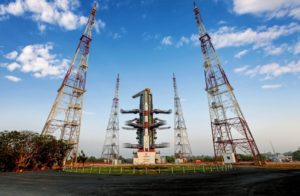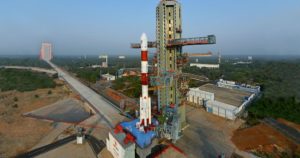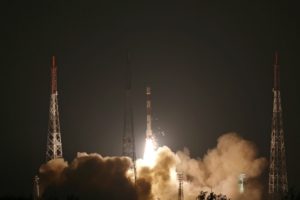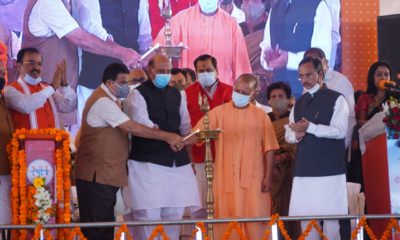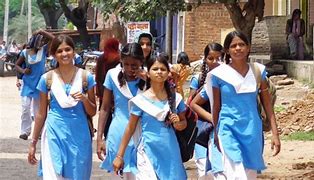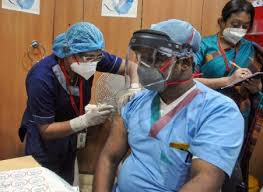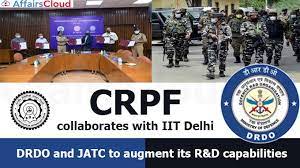Feature
History again created by India after electronic intelligence satellite Emisat puts into orbit by ISRO
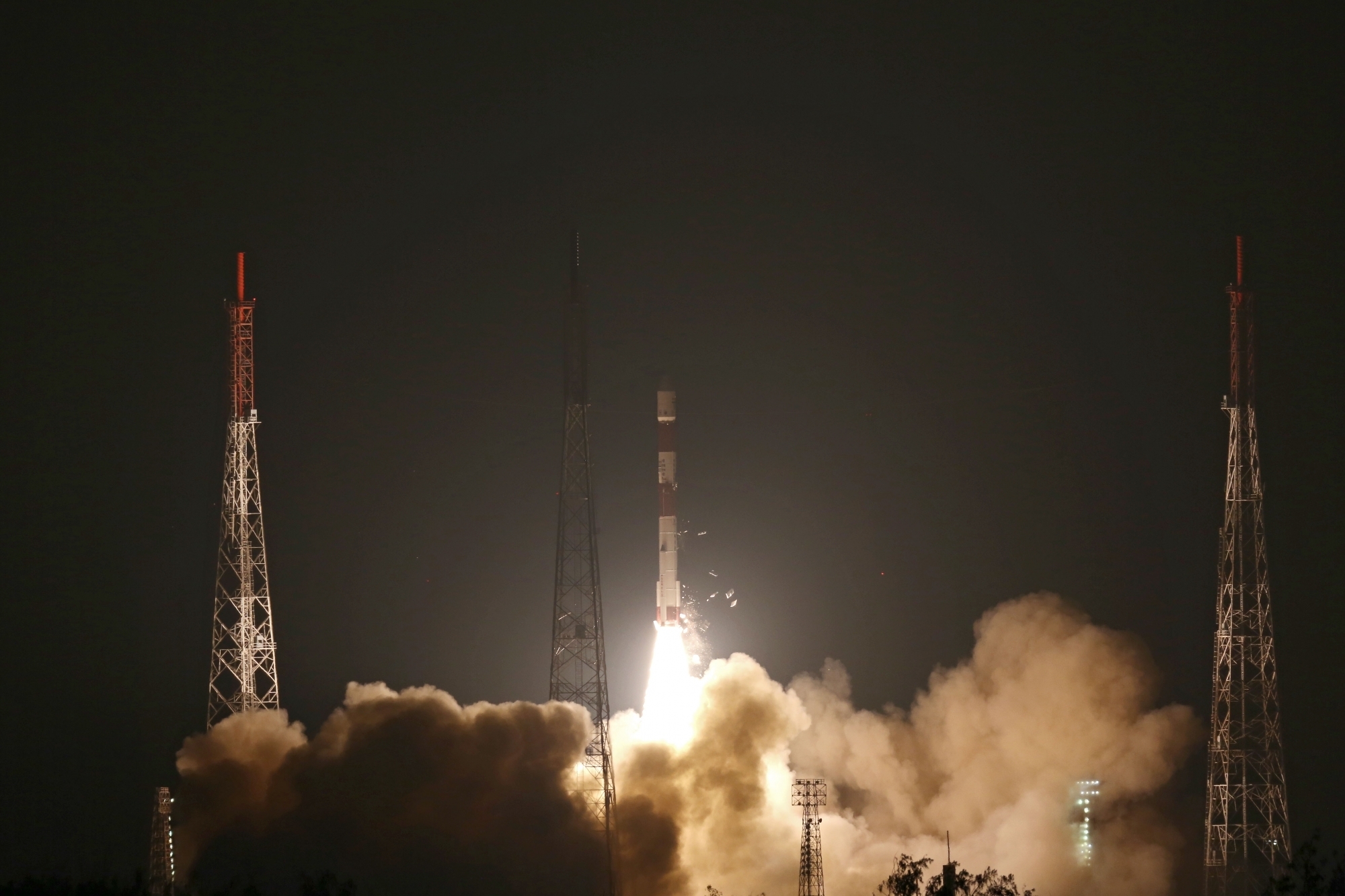
Sriharikota: The Indian Space Research Organisation (ISRO) on Monday put into orbit the Emisat, an electronic intelligence satellite for the Defence Research and Development Organisation (DRDO) in a copy book style.
The notable aspects of this space mission were the flying of a new variant of the Polar Satellite Launch Vehicle (PSLV); switching off and on the fourth stage engine couple of times; and the use of the fourth stage as an orbital platform carrying three experimental payloads.
At 9.27 a.m., the PSLV rocket standing at 44.5 metres tall and weighing about 239 tonne with a one-way ticket, hurtled itself towards the skies ferrying the Emisat and 28 international customer satellites — 24 from the US, two from Lithuania and one each from Spain and Switzerland.
With the fierce orange flame at its tail lighting, the rocket slowly gathered speed and went up enthralling the people at the rocket port while the rocket’s engine noise like a rolling thunder adding to the thrill.
“It is a special mission for us. We will be using a PSLV rocket with four strap-on motors. Further, for the first time we will be trying to orbit the rocket at three different altitudes,” ISRO Chairman K. Sivan had earlier told media persons.
The PSLV is a four-stage engine expendable rocket with alternating solid and liquid fuel.
In its normal configuration, the rocket will have six strap-on motors hugging it’s first stage.
On January 24, the ISRO flew a PSLV with two strap-on motors while in March, it had four strap-on motors.
The space agency also has two more PSLV variants — Core Alone (without any strap-on motors) and the larger PSLV-XL.
The ISRO selects the kind of rocket to be used based on the weight of satellites it carries.
India again creates history by putting defence satellite Emisat into orbit with electronic intelligence:
Even though ISRO has done this earlier, it was more thrilling to note the rocket’s fourth stage/engine was cut/switched off.
More thrilling aspect came in when rocket’s fourth stage/engine was cut/switched off in just over 16 minutes after the lift off.
Forty seven seconds later, the Emisat was ejected at an altitude of about 753 km.
“There is increased demand for satellites from strategic sectors. About six/seven satellites are planned to be built,” a senior official told media persons on the condition of anonymity.
India will also be launching two more defence satellites sometime in July or August with its new rocket Small Satellite Launch Vehicle (SSLV).
Meanwhile, at about 60 minutes after the PSLV’s lift-off, its fourth stage will be restarted and run for about 10 seconds before it will be cut off again.
At about 108 minutes after the lift off, the rocket’s fourth stage will again restarted for few seconds before it will be again cut off.
Finally, at about 110 minutes after the rocket left the earth, the first of the 28 foreign satellites will be ejected and in five minutes all other satellites will be ejected.
Again the fourth stage will be restarted and stopped twice to bring its altitude to 507 km at the end of three hours after the lift off.
At this point the fourth stage will turn into an orbital platform for three experimental payloads: (a) Automatic Identification System (AIS) from ISRO for Maritime satellite applications capturing messages transmitted from ships (b) Automatic Packet Repeating System (APRS) from AMSAT (Radio Amateur Satellite Corporation), India – to assist amateur radio operators in tracking and monitoring position data and (c) Advanced Retarding Potential Analyser for Ionospheric Studies (ARIS) from Indian Institute of Space Science and Technology (IIST) – for the structural and compositional studies of ionosphere, the space agency said.
Entertainment
Meghalaya Reserves Legalized Gambling and Sports Betting for Tourists

The State Scores Extra High on Gaming-Friendly Industry Index
Meghalaya scored 92.85 out of 100 possible points in a Gaming Industry Index and proved to be India’s most gaming-friendly state following its recent profound legislation changes over the field allowing land-based and online gaming, including games of chance, under a licensing regime.
The index by the UK India Business Council (UKIBC) uses a scale of 0 to 100 to measure the level of legalisation on gambling and betting achieved by a state based on the scores over a set of seven different games – lottery, horse racing, betting on sports, poker, rummy, casino and fantasy sports
Starting from February last year, Meghalaya became the third state in India’s northeast to legalise gambling and betting after Sikkim and Nagaland. After consultations with the UKIBC, the state proceeded with the adoption of the Meghalaya Regulation of Gaming Act, 2021 and the nullification of the Meghalaya Prevention of Gambling Act, 1970. Subsequently in December, the Meghalaya Regulation of Gaming Rules, 2021 were notified and came into force.
All for the Tourists
The move to legalise and license various forms of offline and online betting and gambling in Meghalaya is aimed at boosting tourism and creating jobs, and altogether raising taxation revenues for the northeastern state. At the same time, the opportunities to bet and gamble legally will be reserved only for tourists and visitors.
“We came out with a Gaming Act and subsequently framed the Regulation of Gaming Rules, 2021. The government will accordingly issue licenses to operate games of skill and chance, both online and offline,” said James P. K. Sangma, Meghalaya State Law and Taxation Minister speaking in the capital city of Shillong. “But the legalized gambling and gaming will only be for tourists and not residents of Meghalaya,” he continued.
To be allowed to play, tourists and people visiting the state for work or business purposes will have to prove their non-resident status by presenting appropriate documents, in a process similar to a bank KYC (Know Your Customer) procedure.
Meghalaya Reaches Out to a Vast Market
With 140 millions of people in India estimated to bet regularly on sports, and a total of 370 million desi bettors around prominent sporting events, as per data from one of the latest reports by Esse N Videri, Meghalaya is set to reach out and take a piece of a vast market.
Estimates on the financial value of India’s sports betting market, combined across all types of offline channels and online sports and cricket predictions and betting platforms, speak about amounts between $130 and $150 billion (roughly between ₹9.7 and ₹11.5 lakh crore).
Andhra Pradesh, Telangana and Delhi are shown to deliver the highest number of bettors and Meghalaya can count on substantial tourists flow from their betting circles. The sports betting communities of Karnataka, Maharashtra, Uttar Pradesh and Haryana are also not to be underestimated.
Among the sports, cricket is most popular, registering 68 percent of the total bet count analyzed by Esse N Videri. Football takes second position with 11 percent of the bets, followed by betting on FIFA at 7 percent and on eCricket at 5 percent. The last position in the Top 5 of popular sports for betting in India is taken by tennis with 3 percent of the bet count.
Local Citizens will Still have Their Teer Betting
Meghalaya residents will still be permitted to participate in teer betting over arrow-shooting results. Teer is a traditional method of gambling, somewhat similar to a lottery draw, and held under the rules of the Meghalaya Regulation of the Game of Arrow Shooting and the Sale of Teer Tickets Act, 2018.
Teer includes bettors wagering on the number of arrows that reach the target which is placed about 50 meters away from a team of 20 archers positioned in a semicircle.
The archers shoot volleys of arrows at the target for ten minutes, and players place their bets choosing a number between 0 and 99 trying to guess the last two digits of the number of arrows that successfully pierce the target.
If, for example, the number of hits is 256, anyone who has bet on 56 wins an amount eight times bigger than their wager.


